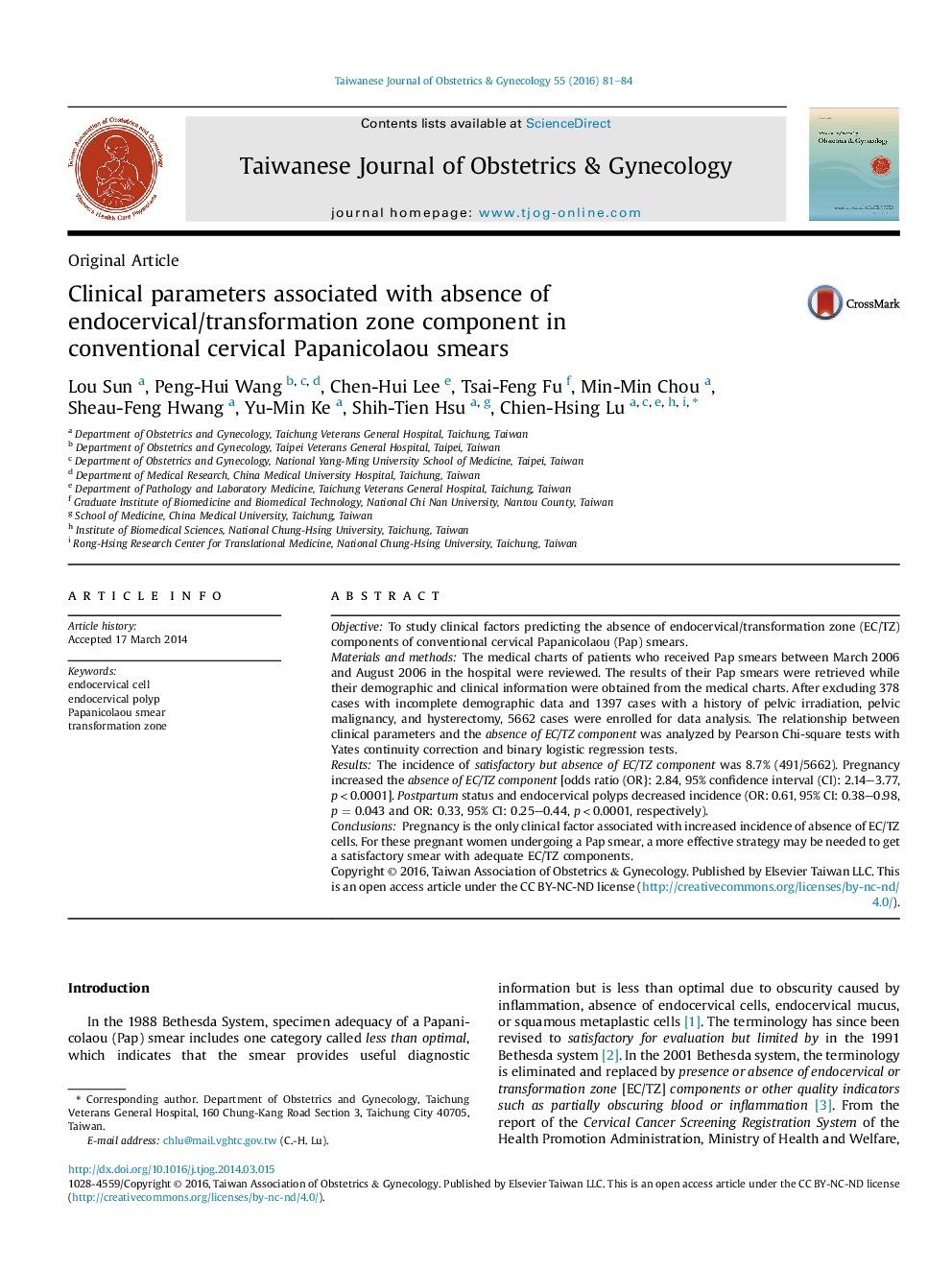| Article ID | Journal | Published Year | Pages | File Type |
|---|---|---|---|---|
| 3975020 | Taiwanese Journal of Obstetrics and Gynecology | 2016 | 4 Pages |
ObjectiveTo study clinical factors predicting the absence of endocervical/transformation zone (EC/TZ) components of conventional cervical Papanicolaou (Pap) smears.Materials and methodsThe medical charts of patients who received Pap smears between March 2006 and August 2006 in the hospital were reviewed. The results of their Pap smears were retrieved while their demographic and clinical information were obtained from the medical charts. After excluding 378 cases with incomplete demographic data and 1397 cases with a history of pelvic irradiation, pelvic malignancy, and hysterectomy, 5662 cases were enrolled for data analysis. The relationship between clinical parameters and the absence of EC/TZ component was analyzed by Pearson Chi-square tests with Yates continuity correction and binary logistic regression tests.ResultsThe incidence of satisfactory but absence of EC/TZ component was 8.7% (491/5662). Pregnancy increased the absence of EC/TZ component [odds ratio (OR}: 2.84, 95% confidence interval (CI): 2.14–3.77, p < 0.0001]. Postpartum status and endocervical polyps decreased incidence (OR: 0.61, 95% CI: 0.38–0.98, p = 0.043 and OR: 0.33, 95% CI: 0.25–0.44, p < 0.0001, respectively).ConclusionsPregnancy is the only clinical factor associated with increased incidence of absence of EC/TZ cells. For these pregnant women undergoing a Pap smear, a more effective strategy may be needed to get a satisfactory smear with adequate EC/TZ components.
